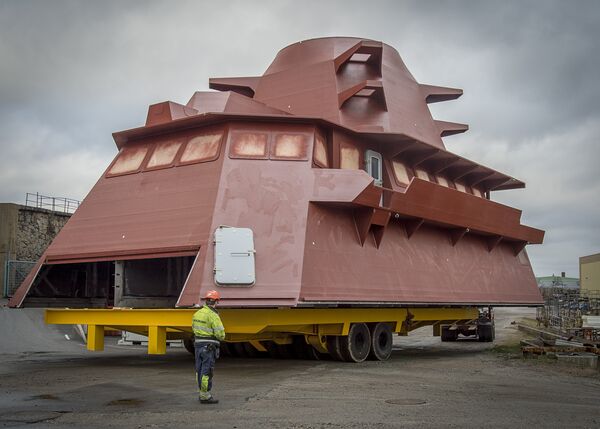
Saab Kockums builds the composite superstructure for Singapore's Independence-class littoral mission vessel. Above, the superstructure for the fifth ship in the class is being prepared for transport to Singapore. (Glenn Pettersson)
Saab Kockums offers composite products to provide navies options for surface warships. These include composite superstructures and the new Saab Lightweight Integrated Mast (SLIM), which is being procured by Finland for its Pohjanmaa-class corvettes, Magnus Dannemyr, Saab Kockums product manager for composites, told reporters at the Saab Kockums shipyard in Karlskrona in southern Sweden on 14 May.
Saab has decades of experience working with composites, starting with an all-composite sailboat in 1965, Dannemyr said. In 1974 the company produced its first composite warship, a mine countermeasure vessel constructed of glass-fibre-reinforced plastic (GFRP). In the mid-1990s the shipyard began construction on the Royal Swedish Navy's Visby-class corvettes, which have an all-composite carbon-fibre hull.
The advantages of composites include reduced weight, which enables greater speeds at less power, enhanced manoeuvrability, and more room for payloads. The Visby class, for example, has a 100% all-composite carbon-fibre sandwich hull structure, resulting in a 50% lower displacement than a comparable steel ship, Dannemyr said. The carbon-fibre-reinforced plastic (CFRP) structure is 66 mm thick and weighs about 17 kg m 2 . It does not corrode, reducing maintenance requirements, he said. The composite structure reduces signatures above and below the surface of the water, according to Dannemyr. They also make a good material for mine countermeasure vessels because they are not magnetic.
Looking to read the full article?
Gain unlimited access to Janes news and more...







